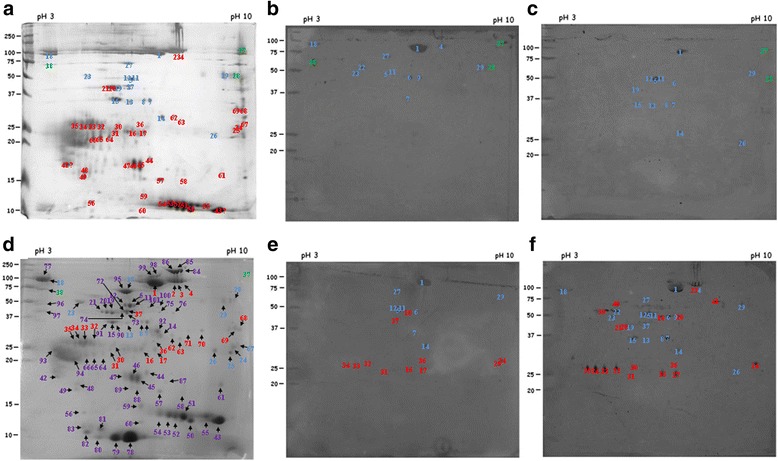Fig. 5.

Identification of salivary proteins from R. microplus that react with sera from tick-susceptible and tick-resistant bovines. A pool of saliva collected from female ticks feeding on genetically susceptible hosts was focalized on 13 cm pH3-10 L (left to right) strips in the first dimension and 12% SDS-PAGE gels in the second dimension. Molecular weight markers are indicated on the left (kDa). a Gel stained with silver. b-f Gels run in parallel with the gel shown in (a) were transferred to nitrocellulose membranes, incubated with pooled sera diluted 1:100 from susceptible (Holstein breed: b and c) or resistant (Nelore breed: e and f) hosts, before (non-infested) and after infestation (larva, nymph and adult stages), respectively, and developed with protein-G conjugated with peroxidase (diluted 1:2000). Reactive spots are highlighted (d) and were excised separately and analyzed by MS. Results are shown in Table 1
